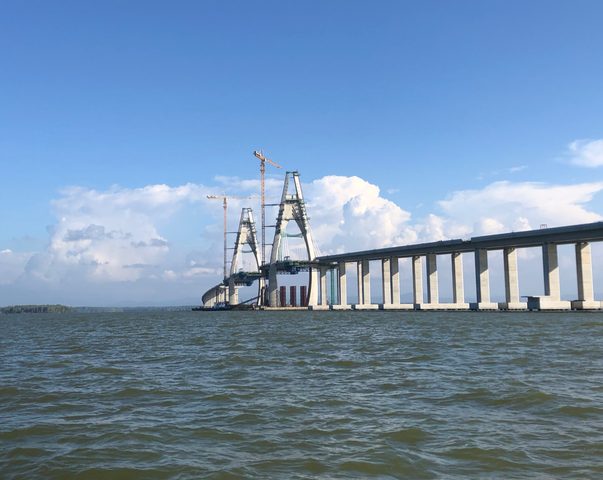In Laos a new railway line is under construction as part of the BRI scheme. Laos is a landlock country, however with the new railway it aims to become a hub for move cargos in the region. The new railway runs from the Chinese border to Vientiane,Laos. It will be 414 km with almost half of its length being in tunnels. Now under construction it is expected to be open for traffic at the end of 2021. Providing a strategic link for China in this region.
One of the main come backs from the Coronavirus is how much China features in a lot of companies supply chains. China realised that in order to maintain its market competitiveness in the world it need to invest heavily in the transportation routes which moved all the products to and from China. Its solution was the China’s Belt and Road Initiative shorten to BRI announced to the world in 2013. BRI aims to link Western Europe and East Africa through a series of ocean shipping routes and overland roads and railways. According to the official website by 2019 had signed co-operation documents with 29 international organisations and 123 individual countries to promote this scheme.

The railways are key link for moving shipments faster both from China to Europe and returns. Germany who trades the most with China out of all the EU has several rail networks under development Leipzig-Shenyang, Duisburg-Chongqing, Hamburg-Zhengzhou, Hamburg-Harbin and Nuremberg-Chengdu. Currently there are rail services into Poland, Germany and Hungary using the existing railway networks. Currently that does mean changing wagons due to the gauge differences between European, Russian and Chinese railways. By 2019 over 14000 rail trips had been made between 50 Chinese cities and 15 European ones. A trial train service ran from Yiwu in China all the way to Stanford-le-Hope,Essex in the UK in 2017 and then a return service was run. Chengdu, Sichuan province has moved over 4600 accumulative trips to Europe since it started operations in 2013. DHL has now started its own services from China to Hamburg and China to Nuess and aims to cut the transit time down to only 10 days on the fastest services.
There are concerns in the West especially from the US that this is all just giving a China a new way to exert its own military or political influence on countries who are recipients of Chinese investment and can not say no. The Chinese government counteract this by saying it is to serve the purpose of supporting mutual economic growth between these countries and China. The Chinese hope that it will lead to better openness with the additional benefit of both parties gaining a cultural understanding of one and another. The People’s Daily Online has written how
Local people in the country where the investment is happening often have mixed views with countries in Africa wondering if this is just colonisation by another name. It will no doubt be many years before the full impact of this massive investment can be properly assessed if it was overall good for the regions it effected. The Chinese government internal handling of the Coronavirus will also determine how confident western firms will be in continuing their own investment in China. It is so important that that the Chinese government issued a formal note to all enterprises involved in the initiative in February to resume work and production as quickly as possible any of the many major projects effect by the Coronavirus to avoid them being seriously delayed and impacting the role out of the scheme. However overall it does remain a very impressive endeavour.